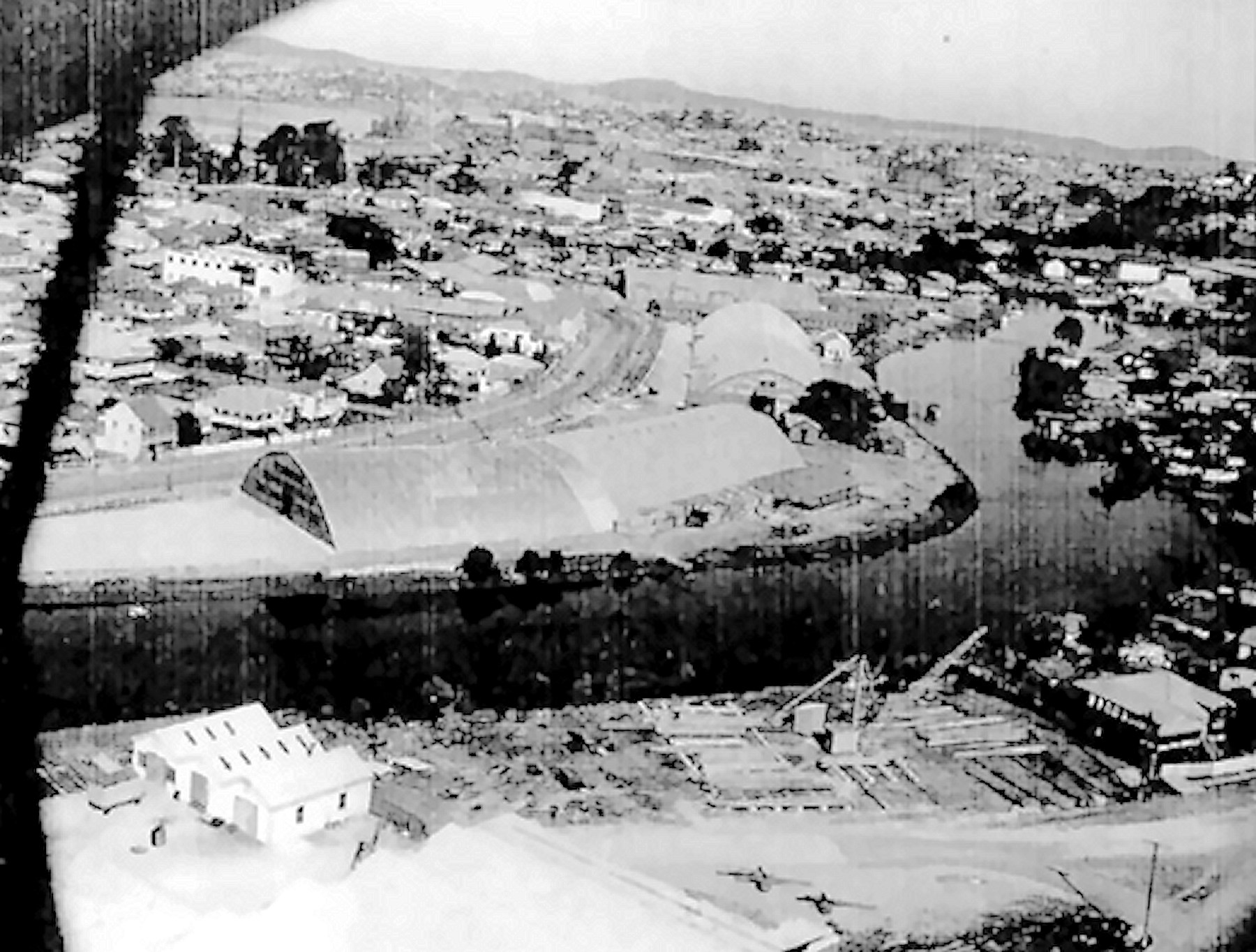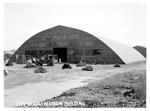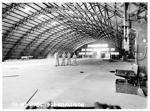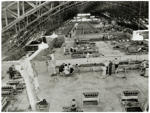GMH ALLISON ENGINE OVERHAUL, ALBION, QLD.

Aircraft production was but one of the numerous major industries undertaken in Australia during the war. No less important was the repair and maintenance of aircraft. With the arrival of the USAAF in 1942, facilities and procedures were quickly established to overhaul and maintain the ever-increasing number of aircraft required in the Pacific campaign. Because of security threats, the repair and overhaul of aircraft were confined to Brisbane, Sydney and Melbourne. In Brisbane, the USAAF contracted some of the work of engine overhaul and repair to firms including QANTAS, ANA and General Motors-Holden.
One of the most widely used engines in the US air fleet was the Allison V-1710. An in-line, liquid-cooled V-12 engine, it was used in a range of fighters including the P-38 Lightning, P-39 Airacobra and P-40 Warhawk.
The Allison Company was founded by James Allison and built motor vehicle engines and other components. The company was acquired by General Motors in 1935 and subsequently developed the V-1710 engine.
 In Brisbane, General Motors-Holden established a facility specifically for the repair and overhauling of Allison engines. The factory was located in three large “Igloos” on the banks of Breakfast Creek and next to Sandgate Road, just around the corner from the famous Breakfast Creek Hotel. The timber-trussed roof support of the “Igloo”, was an innovative design resulting from severe shortages in resources, specifically steel and labour. The design was inspired by the need for lightweight, prefabricated, easily moveable and long-span structures. The timber lattice arch trusses could be easily hand-nailed on-site, using green timbers if there was a shortage of seasoned ones.
In Brisbane, General Motors-Holden established a facility specifically for the repair and overhauling of Allison engines. The factory was located in three large “Igloos” on the banks of Breakfast Creek and next to Sandgate Road, just around the corner from the famous Breakfast Creek Hotel. The timber-trussed roof support of the “Igloo”, was an innovative design resulting from severe shortages in resources, specifically steel and labour. The design was inspired by the need for lightweight, prefabricated, easily moveable and long-span structures. The timber lattice arch trusses could be easily hand-nailed on-site, using green timbers if there was a shortage of seasoned ones.
 GMH was challenged by the 81st Air Depot Group to deliver their first overhauled engine in just 8 weeks from commencement. They delivered that first engine on 15 November 1942, just 7 weeks after being given the task. In that 7 weeks, GMH contractors build a plant along with providing 1,500 special tools and 300 assembly stands. They erected partitioning, monorails, electrical services, water, and gas supplies, and 180 men and women were trained in overhauling internal combustion engines.
GMH was challenged by the 81st Air Depot Group to deliver their first overhauled engine in just 8 weeks from commencement. They delivered that first engine on 15 November 1942, just 7 weeks after being given the task. In that 7 weeks, GMH contractors build a plant along with providing 1,500 special tools and 300 assembly stands. They erected partitioning, monorails, electrical services, water, and gas supplies, and 180 men and women were trained in overhauling internal combustion engines.
 Initially, the plant took up 20,000 square feet which allowed the overhaul of 5 engines per day. Within 6 months the floor space was increased to 40,000 square feet to allow the processing of 10 engines per day. By that time there were about 530 employees working at the Allison Overhaul Plant.
Initially, the plant took up 20,000 square feet which allowed the overhaul of 5 engines per day. Within 6 months the floor space was increased to 40,000 square feet to allow the processing of 10 engines per day. By that time there were about 530 employees working at the Allison Overhaul Plant.
The Plant was so successful that the overhaul of Pratt and Whitney engines was added to the mix.
From 11 May 1942 until 11 May 1943, GMH in Brisbane carried out overhauls on 375 aeroplane engines and over the 2.5 years of the project, 2000 engines were reconditioned.
Due to the noise developed when testing the overhauled engines, a separate facility was required, away from the residential areas. The aerodrome at 116 Lamington Avenue, Eagle Farm was selected as the most appropriate location and an Allison Testing Area was constructed in three stages during 1942-43 for the purpose of static testing of the engines. Simple and functional in design, the site encompasses six open stands constructed by servicemen of the 81st Air Defence Group of the 44th Depot Repair Squadron; two enclosed engine stands constructed by the Allied Works Council, two open stands, and a concrete pavement area which was the site of the associated buildings.
References:
| Date | Content | Link |
| 1942 | Allison Engine overhaul Igloos on Brisbane River bank | JPG |
| 1943 | Allison Engine overhaul Igloo | JPG |
| 1942 | Igloo Interior Mezzanine floor ready for occupation | JPG |
| 1943 | Igloo Mezzanine floor in operation | JPG |
| 1944 | Newcastle Herald report of visit to Igloos | |
| 2006 | Former Allison Testing Stands Conservation management | |
| 1942/4 | GMH Photo Album of Allison Engine facility. | |

